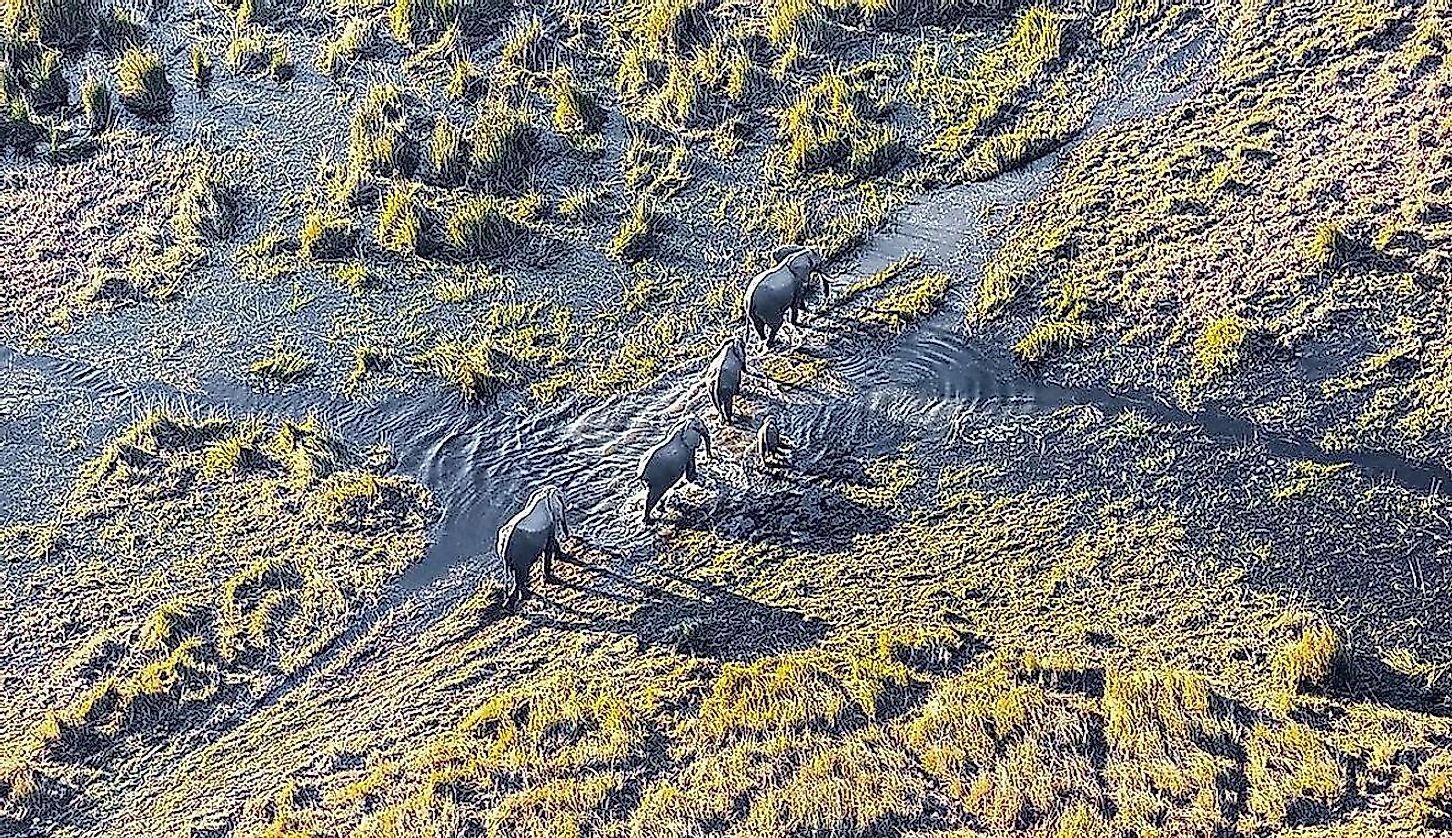
What Is A Wetland?
A wetland is an area of land characterized by soil either covered in or saturated with water. Depending on the type of wetland, they may be permanently or temporarily flooded, and the depth and duration of the flooding vary. However, even during the unflooded periods, the soil remains saturated. The water saturation in these ecosystems determines soil development and influences biological, physical, and chemical attributes. Water also creates ideal conditions that foster the growth of hydrophytes, which are plants that are adapted to grow in saturated soils. The water in wetlands is often groundwater but can also come from a nearby lake or river. Seawater can also produce wetlands in coastal regions that encounter strong tides.
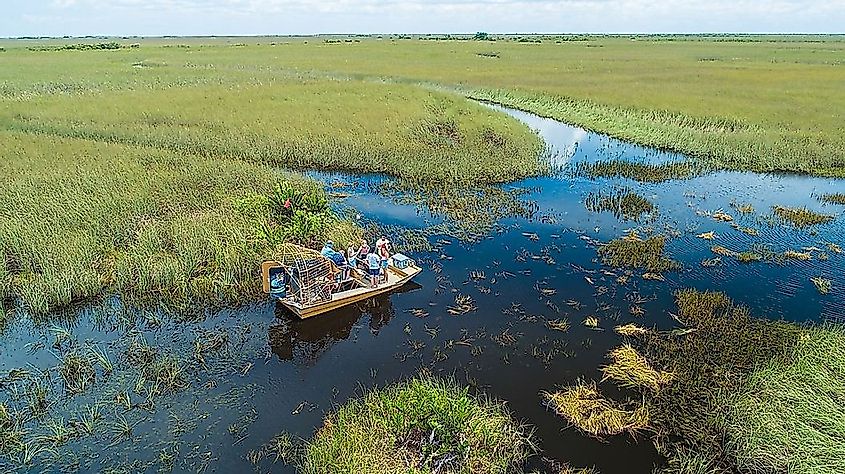
Some wetlands are transitional zones between upland and aquatic ecosystems, meaning they are neither completely dry nor wholly submerged. Others are spread across the landscape in upland depressions. Trees and other sturdy vegetation grow in wetlands, while mosses and grasses are the dominant hydrophytes in wetlands that are more frequently flooded. Wetlands can be found in many types of climates and on every continent except Antarctica.
Contents:
Types Of Wetlands
There are several types of wetlands, and they all vary due to several factors such as differences in soil and topography. Most scientists agree that the three major types of wetlands are swamps, marshes, and bogs. Wetlands vary in size and can be found inland or along coastlines. Their landscapes also differ, with some dominated by woody plants while others are wet grasslands.
Marshes
Marshes are wetlands that are either flooded permanently or during high water periods. They are often at the edges of rivers or lakes. Marshes create flat, grassy borders along coastlines, inside bays, and near river mouths. The water in marshes is either from surface water such as lakes or groundwater. Many plants and animals inhabit marshes due to their abundance of nutrients and neutral pH levels. Freshwater and saltwater are two types of marshes.
Freshwater Marshes
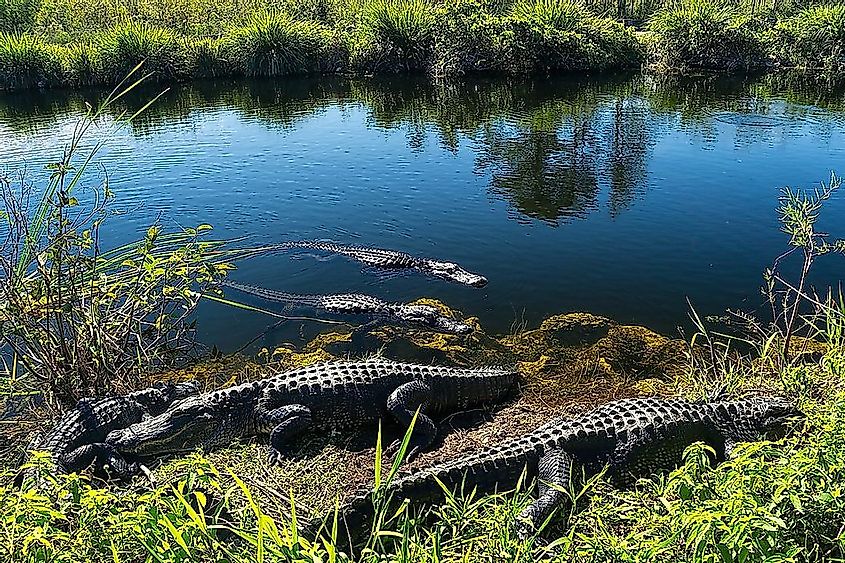
Freshwater marshes are non-tidal systems often dominated by grasses and aquatic plants and usually form around lakes and streams. These marshes are far from the coast, nearly hundreds of miles away. The prairie pothole region of North America houses many freshwater marshes. This area extends across five US states and three Canadian provinces. Thousands of migratory birds rely on the prairie potholes when they migrate to more temperate climates. However, since these depressions are incredibly fertile, many prairie potholes have been drained for agricultural purposes.
Freshwater marshes make up the majority of the Everglades in southern Florida. The Everglades is home to a diverse array of wildlife, from hundreds of wading bird species to alligators and the endangered Florida panther.
Saltwater Marshes
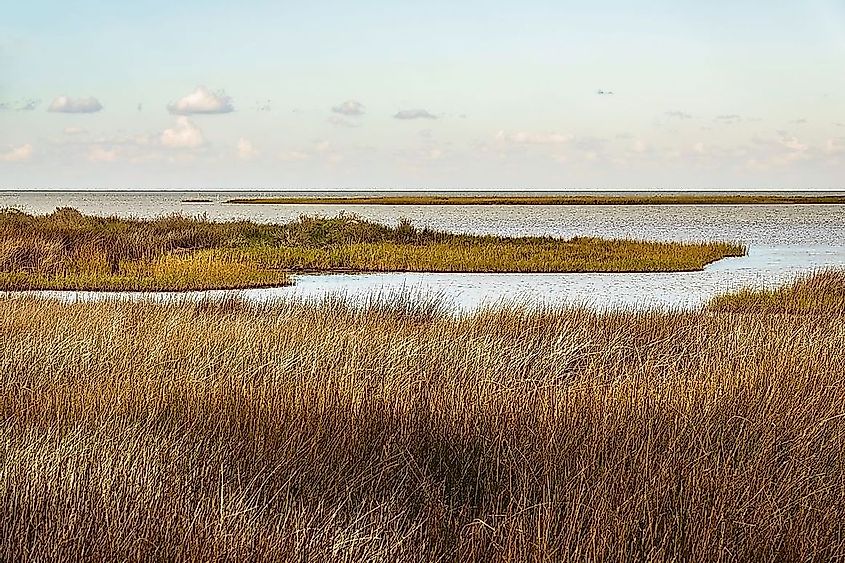
Saltwater marshes are extremely biodiverse due to their rich ecosystem. Grasses dominate the landscape, and the marsh provides food and shelter for various creatures such as fish, amphibians, fungi, and reptiles. Saltwater marshes are found mainly along temperate coastlines but may also live in boreal climates, the Arctic, and tropical regions. Almost half of the salt marshes in the US are found along the Gulf Coast.
Swamps
Swamps are permanently saturated wetlands dominated by woody vegetation, with saturated soils during the growing season and standing water at other times of the year. Swamps are rich in nutrients and live in low-elevation floodplains near streams or rivers. Swamps’ standing water creates vital habitats for many animals, including snakes, shrimp, and river otters. There are two major classes of swamps: forested and shrub. In forested swamps, water-tolerant trees dominate the landscape, while in shrub swamps, shrubby species such as alders are the dominant vegetation. Swamps can also be divided into freshwater and saltwater swamps.
Freshwater Swamps
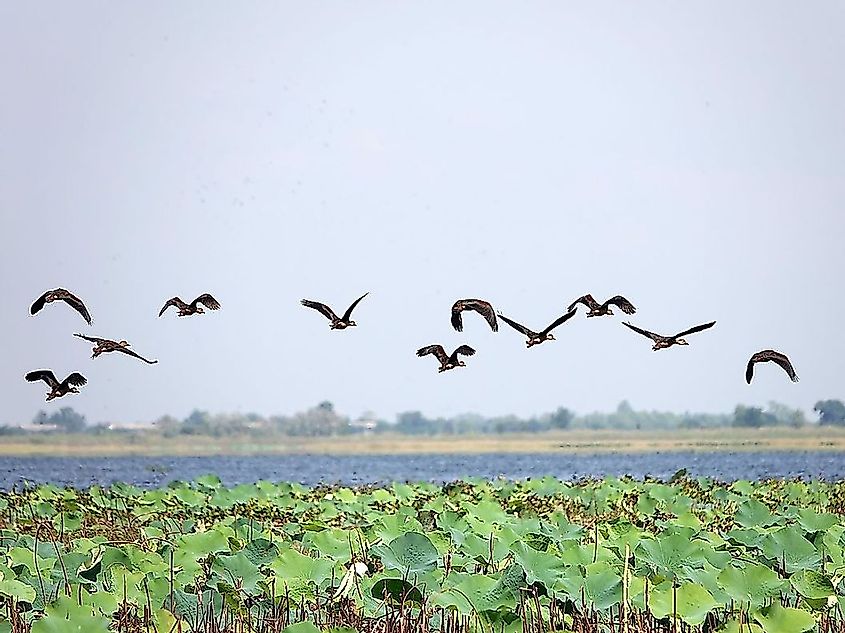
Freshwater swamps are commonly found inland and in tropical areas near the Equator. These swamps generally experience humidity and heat year-round and typically develop around lakes or streams where runoff is low. The water levels in freshwater swamps can fluctuate depending on seasonal flooding and rainwater. Specific water-tolerant plants, such as lotus and cypress, play an essential role in maintaining the swamp’s ecosystem.
In the Democratic Republic of Congo and the Republic of Congo, swamp forests surround the Congo River. These swamps are more shaded and humid due to a thick canopy of trees, and they are home to hundreds of insects, amphibians, and large mammals. Reptiles and amphibians, in particular, are highly adapted to fluctuating water levels and therefore flourish in freshwater swamps. Cypress swamps are common throughout the US, and Louisiana’s bayou swamps are home to crawfish, catfish, and wading birds.
Saltwater Swamps
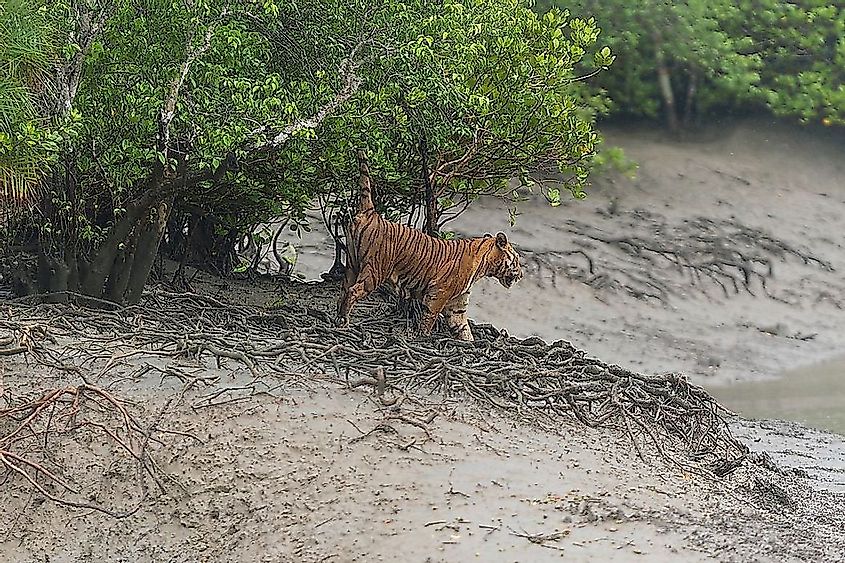
Saltwater swamps are typically found along tropical and subtropical coastlines and form when seawater blankets mud or sand flats during high tides. Mangroves, which are woody trees or shrubs adapted to grow and thrive in salty, low-oxygen soil, can endure tidal flooding. Mangrove swamps contain salt-tolerant trees and plants that can grow in brackish to salty tidal waters. Mangrove trees are important to wetlands because they help build sediment through their growth and decay and provide shelter to organisms. For example, birds use mangrove roots and branches for their nesting sites.
Bogs
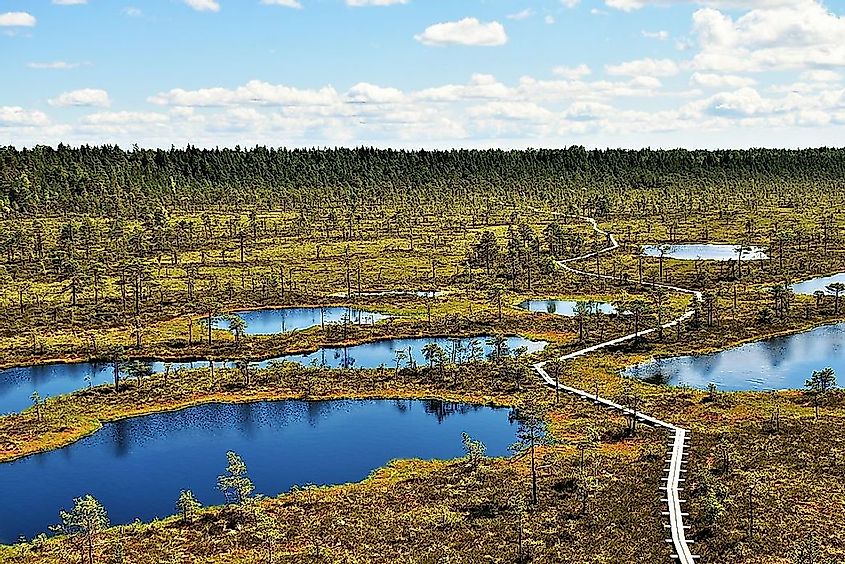
Bogs are basin wetlands that remain saturated solely through precipitation; they do not receive water through streams or groundwater. The environments of bogs are low in oxygen, nutrient-poor, and acidic. They are more common in cold climates, extending north to the Arctic areas in North America, Europe, and Asia. They also inhabit warm regions but at higher altitudes. The Western Siberian Lowlands in Russia, the world’s largest wetland, is composed of multiple bogs. Sphagnum mosses dominate the ecosystem and form a thick layer that supports a variety of species. These mosses also lower the water pH to levels analogous to acid rain. Spongy peat deposits, evergreen trees, and shrubs also live in bogs.
Bogs are infertile wetlands and do not possess the same biodiversity as other types of wetlands. Their soil and water are much more acidic than swamps and marshes. Since their nutrient levels are low, particularly nitrogen, only specific plants can grow and thrive in these unique conditions. Many plants have adapted to bogs’ harsh environments by expanding their food source. For example, pitcher plants are carnivorous plants that consume insects.
Importance Of Wetlands
Wetlands are vital ecosystems as they can filter water, protect coastal areas from storm surges, and provide food for millions of people.
Water-Treatment Facilities
Wetlands act as the earth’s natural wastewater-treatment facility because of their ability to trap pollutants in the soils and transform dissolved nitrogen into nitrogen gas. Organisms such as fungi and algae can filter waste, purify water, and absorb harmful chemicals from urban areas and farm runoff. Pollutants that are not absorbed sink to the bottom of wetlands and become buried within the sand.
Protection From Storms
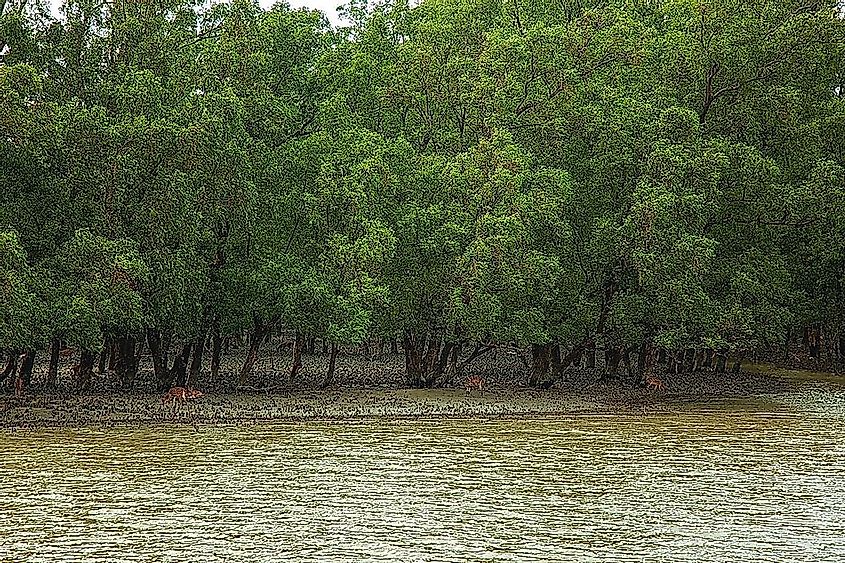
Wetlands can help minimize the damaging effects of storm surges, floods, and storms. Wetlands act like reservoirs that absorb excess water during heavy rainfall and provide an area for water movement to slow down during storms. Trees and other wetland vegetation also temper the spread of floodwaters by distributing them more slowly over the floodplain. Without these ecosystems, floods can be more devastating, and storm surges can move further inland. Coastal wetlands can also help buffer the strong winds and waves caused by hurricanes, helping lower flood heights and erosion.
Food Security
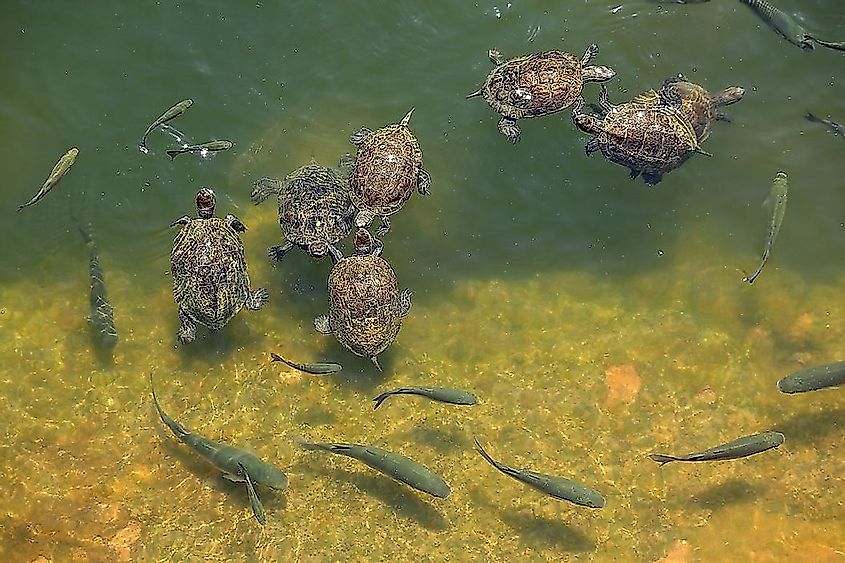
Hundreds of millions of people live close to and depend on wetlands for their food. Therefore, wetlands are vital for food security. These ecosystems support rice cultivation, which is a staple in the diets of half the world’s population. Humans also obtain numerous natural products from wetlands, including fish, shellfish, blueberries, cranberries, and wild rice.
Environmental Benefits
Wetlands can help buffer the effects of climate change by storing up to 50 times more carbon than rainforests. Therefore, wetlands can help keep this gas, which contributes to climate change, out of the atmosphere. Wetlands store carbon by filtering matter that contains carbon from the water and burying it within the sediments. Wetlands are also sturdy and grow rapidly, which means they have long lifespans and can suck carbon from the atmosphere for as long as possible.
Threats To Wetlands
Despite wetlands’ importance, many factors threaten their survival. They face threats from human-caused disturbances such as pollution, climate change, agriculture, dam construction, mining, and many more.
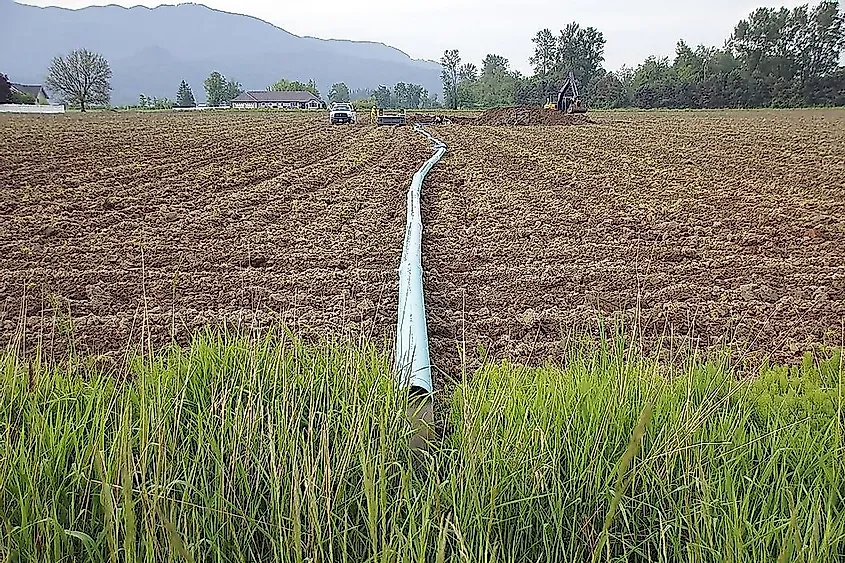
Humans have added to or drained water from wetlands for thousands of years, resulting in significant wetland loss. For example, the extensive freshwater wetlands of the US Midwest have been drained for agricultural purposes, while logging has removed many of the dominant trees from several wetlands. In the US, conversion to farmland and other developments destroyed more than half of its original wetlands. The years between the 1950s and 1970s experienced the highest wetlands loss rates until conservation movements helped slow the decline rate.
Approximately half of the world’s wetlands have disappeared since 1900, and in some areas, wetland destruction occurred at incredible speeds. In the Philippines, 80% of its coastal wetlands have been destroyed in the past 30 years.
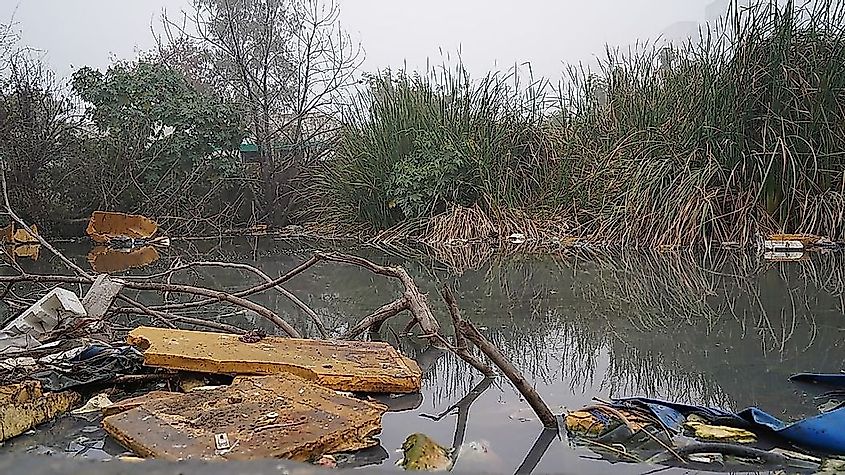
Pollution is another human-caused issue that is affecting wetlands. While these saturated lands act as natural water filters, they can only clean up so much. The effect of pollution on drinking water and wetland diversity remains a growing concern.
Climate change can also cause some wetlands to experience rising sea levels that overwhelm shallow wetlands and drown specific mangrove trees. The warmer climate can also negatively affect wetlands as warmer waters can cause algae to overwhelm the ecosystem, which can lower water quality and pose health problems to animals and humans. On the other hand, droughts in certain areas are destroying and drying out estuaries, marshes, and floodplains. Although wetlands act as sponges that can hold water in reserve for a while, they cannot sustain it forever if the water is not replenished.
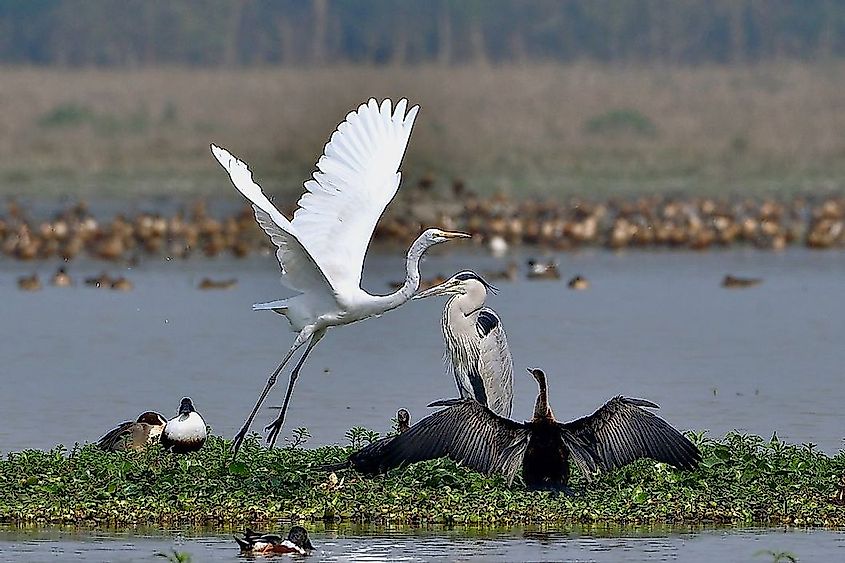
Wetlands are incredibly biodiverse and essential ecosystems. They help purify water, absorb harmful carbon in the atmosphere, and provide food to millions of people. However, human interference has caused about half of the US’s wetlands to disappear. While efforts have been made to slow their decline, other threats such as climate change and pollution continue to impact these vital ecosystems negatively.











